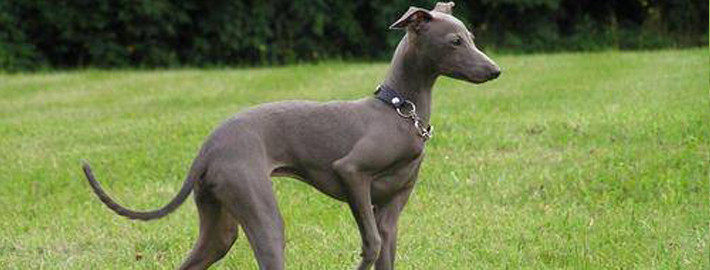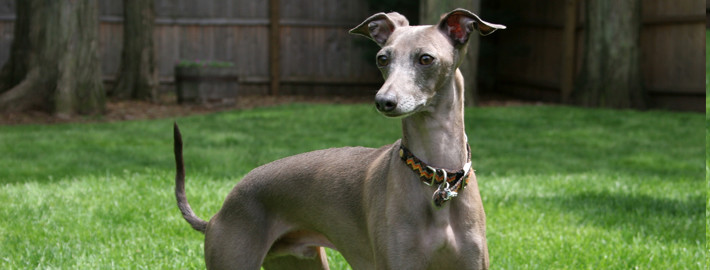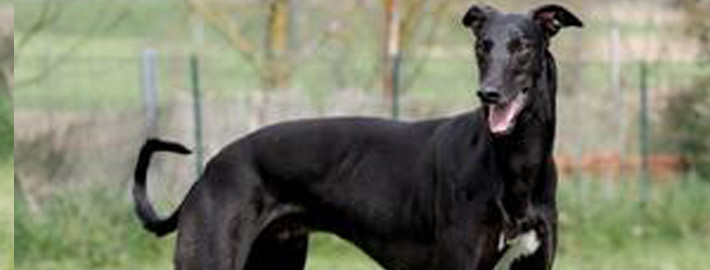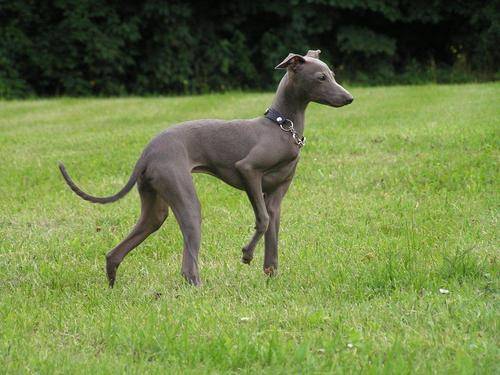What makes the Italian Greyhound Unique?
These very small sighthounds originally served their owners as companion dogs and vermin hunters.
Breed Groups
Page Contents
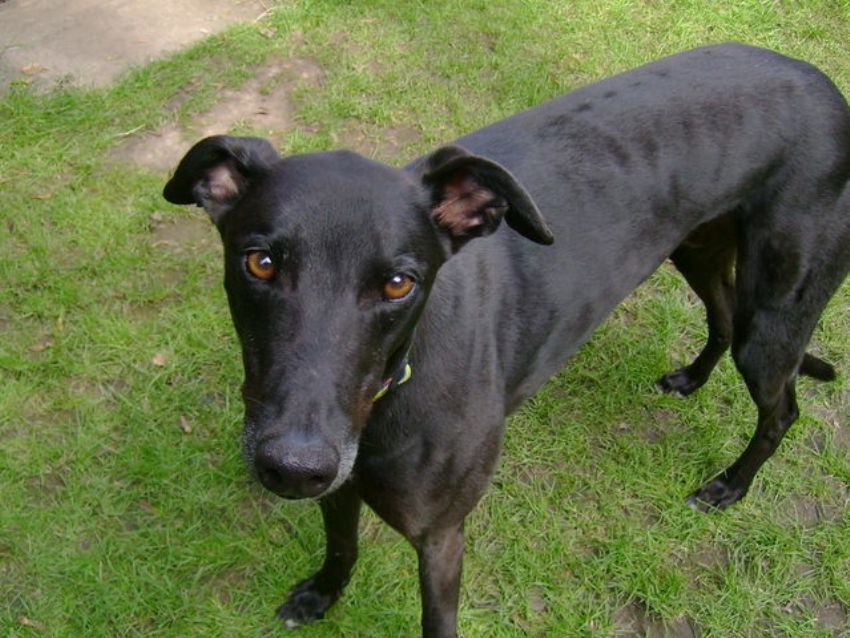
Is the Italian Greyhound Right For You?
Playful and intelligent, the Italian Greyhound is generally easy to train and prefers to spend most of his time with his owner. They like attention and affection, and are a peaceful, gentle friend to adults and children. Italian Greyhounds are an active breed that loves to run and play and requires daily walks. Their small size makes them ideal for an apartment and his short, smooth as satin coat makes him one of the easiest breeds to groom. If you are considering purchasing an Italian Greyhound puppy, learn more. *Toy Group; AKC recognized in 1886.
*Ranging from 13 to 15 inches tall at the shoulder.
*Companion, small game hunter.
In 5 Words
- Athletic
- Companionable
- Intelligent
- Agile
- Mischievos
Characteristics
Learn About the Italian Greyhound
Description
General Description
Italian Greyhounds greatly resemble their larger counterparts in many ways. Although they are smaller and leaner in stature, these dogs are just as graceful as the Greyhounds and they are also able to run with a double suspension gallop. Members of this breed also possess tucked up stomachs, arched backs, and slender legs. Italian Greyhounds have tapered heads and long muzzles. A scissors bite is commonly found on these dogs. Members of this breed also possess dark colored eyes and noses. These dogs have upright ears that are folded slightly at the tips. Their low set tails are somewhat curved near the ends and hang at a downwards angle.
Size
Dogs of both genders typically stand between 13 and 15 inches (33 and 38 centimeters) in height. The average weight for members of this breed usually is somewhere between 8 and 18 pounds (3.5and 8 kilograms).
Coat
Italian Greyhounds have short, glossy coats that are typically free of any odors. Standards vary between breed organizations as to what colors are acceptable for these dogs. However, black and tan or brindle markings are generally against the regulations.
Short History of the Italian Greyhound
As is the case with most breeds, there is no definitive evidence that pinpoints their exact origins. However, Greece, Turkey, and Egypt have all been suggested as possible homelands for the Italian Greyhounds. It is also true that dogs with similar appearances have been depicted on artworks in the Mediterranean region for over two thousand years. A number of these individuals were even mummified and laid to rest with their Egyptian owners. Others have been unearthed from the ashes of Pompeii.
From the Middle Ages onwards, Italian Greyhounds were popular pets for members of the nobility and the dogs are shown in numerous artworks alongside their high ranking owners. The breed’s popularity in Italy during the Renaissance was a contributing factor in their modern name. In 1886, these dogs were officially recognized by the American Kennel Club (AKC) and given a place in the Toy group. The United Kennel Club (UKC) followed suit in 1948. Of course, these are not the only breed clubs that currently have the Italian Greyhounds as members.
Temperament
Although they are small dogs that can get along fine in apartment settings, Italian Greyhounds have much in common with their larger relations. Members of this breed like nothing better than to run and chase whatever crosses their path. These dogs are also very sensitive, shy individuals that do not immediately warm up to most strangers. Members of this breed may bark to alert their owners when unfamiliar people enter their territory but Italian Greyhounds are not great watchdogs because they will also bark if something alarms them.
However, these dogs are incredibly devoted to all members of their family. Italian Greyhounds make placid playmates that like nothing better than to bask in the affection showered on them by their owners. After all, members of this breed want nothing more than to please their humans and spend time with them. Prospective owners should note that these dogs will not be happy if they are left alone for long amounts of time. As a result, Italian Greyhounds are best suited for households that contain active retirees or at least one stay-at-home parent that can be with them for the majority of the day.
As a result of their extremely thin coats and their distaste for getting their feet wet, these dogs are not able to live their lives outdoors. Instead, they should be allowed to remain inside with their human family members. Italian Greyhounds are also very sensitive to cold temperatures. They have been known to burrow under covers and cuddle up together even on warm days. Therefore, it’s a good idea for owners to provide their dogs with plenty of blankets so that they don’t get chilled.
Caring for Your Italian Greyhound
General Health
Italian Greyhounds have an average lifespan of 13 years. However, accidents are reported as being a main cause of death for members of this breed so owners will want to make sure their pets are kept as safe and secure as possible. While these dogs are generally known to be a healthy breed, there are some additional problems that can arise from time to time. Hypothyroidism, epilepsy, patellar luxation, Von Willebrand disease, Legg-Perthes, and eye problems such as progressive retinal atrophy have all been known to occur in members of this breed.
Care
Daily
These dogs need to be walked on a daily basis. However, owners should be aware that younger members of this breed will probably be more active than those over the age of 2 years old. Italian Greyhounds will also benefit from having regular access to an unfenced area where it is safe for them to run and play. Dog sports are another fun pastime for members of this breed.
Weekly
All pets should have their teeth brushed on a regular basis so that they don’t fall prey to otherwise avoidable health problems.
Monthly
Heartworm, flea, and tick prevention medications should be administered on regular basis to keep pests at bay.
Grooming & Bathing
Members of this breed do not shed much and they need very little grooming. A quick rub down with a towel every so often will help keep their coats spotless. These dogs do not need regular baths and should be washed only if they become filthy. Italian Greyhounds get chilled easily so owners will want to make sure that their pet is completely dried off and kept warm after he or she gets out of the bath. Regular toenail trimming is also recommended for members of this breed.
Exercise & Training
Like most companion breeds, Italian Greyhounds are intelligent individuals that learn fairly quickly. However, housetraining can be a bit difficult for these dogs. They also tend to be a bit stubborn and have short attention spans. Consistent rules, short lessons, and patient instructions are generally the best way to manage members of this breed. Prospective owners should be aware that Italian Greyhounds are sensitive individuals and they cannot handle harsh discipline or training techniques. If these dogs are properly socialized when they are young, they will get along well with children, other canines, and even cats. All the same, Italian Greyhounds are not recommended for households that contain larger dog or very young children because members of this breed can easily be injured by rough play.

